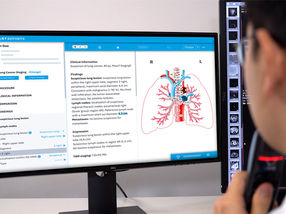Hand hygiene solutions
Healthcare-acquired infections fuel uptake in Western Europe, says Frost & Sullivan
The need to prevent and control healthcare acquired infections (HCAI) across Europe, which results in 4.5 to 5 million cases annually, is driving the hand hygiene market in Western Europe. Outbreaks of norovirus and bird flu over the past five years have also served to highlight the importance of hand hygiene in containing infectious diseases. Hand hygiene product manufacturers should take advantage of these trends by offering a one-stop solution for all disinfection requirements.
New analysis from Frost & Sullivan’s Hand Hygiene Market in Western Europe research finds the market earned revenue of $415.4 million in 2013 and estimates this to reach $680.8 million in 2019. The research covers hand wash, hand disinfectant and surgical hand antisepsis products across the United Kingdom, Germany, France, Italy, Spain, Benelux and Scandinavia.
Alcohol-based hand rubs are expected to become the most popular solution in the hand disinfectant and surgical hand antisepsis segments due to its proven efficiency and ease of use.
“Adoption of hand hygiene compliance monitoring (HHCM) devices in hospitals across Western Europe is improving compliance levels considerably, thereby fuelling market revenues,” says Frost & Sullivan Healthcare Research Analyst Parthasarathy Raghava. “The market will see a host of opportunities as automatic HHCM technology is integrated with most automated and manual dispensers to become a standard across all hospitals in the next five to seven years.”
Government initiatives also help boost the market. These include the launch of the World Health Organisation’s ”Clean Care is Safer Care” program that focuses on HCAI prevention and patient safety through the practice of hand hygiene techniques as well as the effective disinfection of the hospital environment. Various national awareness programmes and campaigns further improve hand hygiene compliance by reinforcing patients’ right to enquire and insist on hand hygiene in healthcare settings.
However, market potential varies across the countries in Western Europe. Inadequate awareness, education, and training on the significance of hand hygiene, along with the lack of standard regulations for hand hygiene in the healthcare sector are proving to be market restraints.
“Manufacturers should offer a wide range of hand hygiene products at competitive prices to expand their customer base in Western Europe,” concludes Raghava. “They must also have a thorough understanding of the market dynamics and win the confidence of health authorities in each country so as to augment their market share across the region.”
Most read news
Organizations
Other news from the department business & finance

Get the life science industry in your inbox
From now on, don't miss a thing: Our newsletter for biotechnology, pharma and life sciences brings you up to date every Tuesday and Thursday. The latest industry news, product highlights and innovations - compact and easy to understand in your inbox. Researched by us so you don't have to.























































